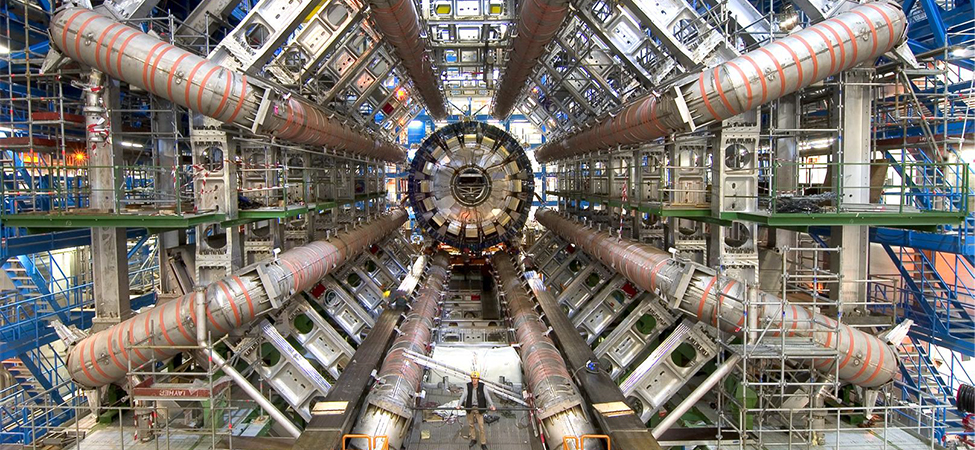Particle Physics and Cosmology
Introduction
Samuel J. Ling; Jeff Sanny; and William Moebs

At the very beginning of this text we discussed the wide range of scales that physics encompasses, from the very smallest particles to the largest scale possible—the universe itself. In this final chapter we examine some of the frontiers of research at these extreme scales. Particle physics deals with the most basic building blocks of matter and the forces that hold them together. Cosmology is the study of the stars, galaxies, and galactic structures that populate our universe, as well as their past history and future evolution.
These two areas of physics are not as disconnected as you might think. The study of elementary particles requires enormous energies to produce isolated particles, involving some of the largest machines humans have ever built. But such high energies were present in the earliest stages of the universe and the universe we see around us today was shaped in part by the nature and interactions of the elementary particles created then. Bear in mind that particle physics and cosmology are both areas of intense current research, subject to much speculation on the part of physicists (as well science-fiction writers). In this chapter we try to emphasize what is known on the basis of deductions from observational evidence, and identify ideas that are conjectured but still unproven.

